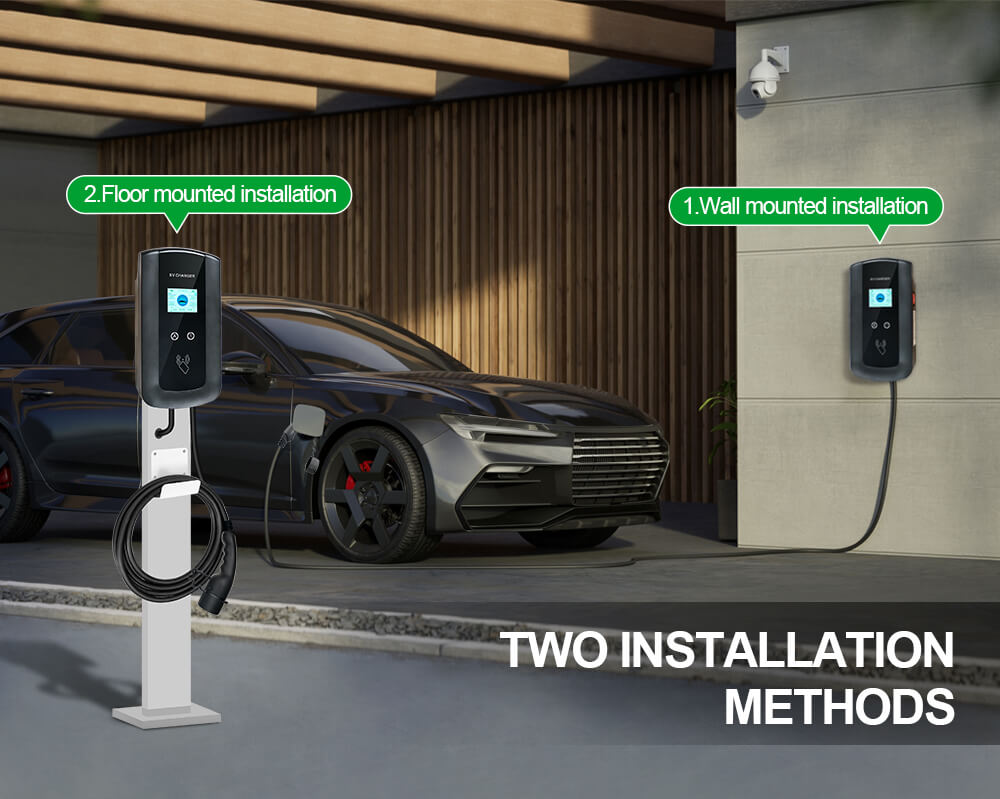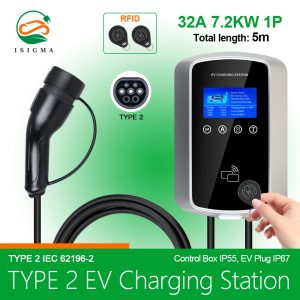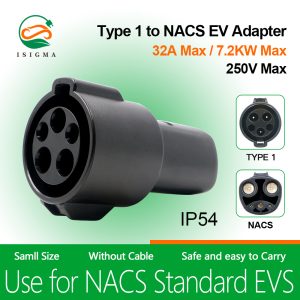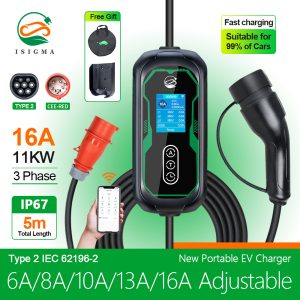With the rapid development of my country's social economy, the research and development of new clean fuel vehicles is not only of great significance to the sustainable development of my country's energy and automobile industries, but also can promote the development of related technologies and industries. Therefore, as an important part of the national new energy strategy, electric vehicles have attracted more and more attention from the society. At the same time, people have gradually paid attention to the charging facilities industry that matches them. Compared with traditional electric vehicle charging stations, electric vehicle charging piles have the advantages of small size and light weight, can be placed in residential areas, office buildings, supermarket parking lots, and are conveniently connected to the grid power supply system. Therefore, the development of low-cost charging piles has become a An important link in the development of electric vehicles.
Working principle of electric vehicle charging Stations

Charging pile classification
The charging station is a power station for electric vehicles, and its function is similar to that of a fuel dispenser in a gas station. According to different power supply methods, it can be divided into AC charging piles and DC charging station. AC charging stations refers to the charging station that uses AC charging mode to charge the power battery of electric vehicles. The charging pile for charging the power battery of electric vehicles, the DC charging mode is a mode in which the controllable DC power output by the charging station directly charges the power battery.
Working principle and charging process
working principle
The general structural block diagram of pure electric vehicle charging is shown in Figure 1. The three-phase power grid inputs alternating current, which is converted into direct current by a bridge-type uncontrollable rectifier circuit, filtered by an LCR circuit, and then sent to a high-frequency DC-DC power converter. The power converter outputs the required DC voltage after direct-to-direct conversion. Charging electric vehicle batteries. Charging can choose four modes: fixed power, fixed time, fixed amount, and automatic (until full).
EV Charging Process
At present, sensory wireless charging technology has not yet solved the problem of radiation interference under high charging power, and the most widely used charging methods focus on contact charging. With the rapid development of power electronics technology and variable current control technology, a single charging mode can no longer meet the charging requirements of large-capacity batteries. The electric vehicle charging station adopts a mixed charging mode of constant voltage and current limiting charging and staged constant current charging. Commonly used electric vehicle batteries are divided into two categories, one is battery and the other is fuel cell. Batteries are mainly used in pure electric vehicles, and fuel cells are mainly used in hybrid electric vehicles. During the normal use of electric vehicles, the battery, as the main power component, provides power support for low-speed starting and full-load acceleration for electric vehicles. The relatively mature rechargeable batteries on the market mainly use lithium batteries. In the initial stage of charging, the best charging rate is generally used for current-limited charging. At this stage, due to the low electromotive force of the battery, even if the charging voltage of the battery is not high, the charging current of the battery will be very large, so the charging current must be limited. As the charging voltage increases, the electromotive force of the battery continues to rise, and the charging voltage of the battery also continues to rise. When the battery voltage reaches the best charging voltage allowed, point A in Figure maintain constant voltage charging. Since the electromotive force in this stage continues to rise while the voltage remains unchanged, the charging current of the battery decreases in a hyperbolic trend until it drops to zero. But in the actual charging process, the charging can be stopped when the charging current is less than 0.015CA.
Charging parameter analysis
According to the requirements for the power quality of charging station in the Shenzhen Standardization Guiding Technical Document "Technical Specifications for Electric Vehicle Charging Systems", and considering that charging voltage and power are relatively important parameters in the entire power grid system, this section focuses on the analysis of charging voltage and The mathematical meaning of the charging power parameter.

Charging Voltage Parameters
The high-voltage power grid can provide the power needed for the electric vehicle charging station through a series of measures such as rectification, inverter, and filtering, and it will inevitably be mixed with some harmonic signals, which will affect the quality of power supply. Therefore, by installing monitoring points on the voltage central point or voltage dominant node, observing the dynamics of current and voltage, we can find the weak point of power supply and reduce the safety margin value.
Voltage parameters mainly include: voltage limit, sensitivity index and stability margin index.
In the initial stage of charging, the best charging rate is generally used for current-limited charging. At this stage, due to the low electromotive force of the battery, even if the charging voltage of the battery is not high, the charging current of the battery will be very large, so the charging current must be limited. As the charging voltage increases, the electromotive force of the battery continues to rise, and the charging voltage of the battery also continues to rise. When the battery voltage reaches the best charging voltage allowed, point A in Figure 2) maintain constant voltage charging. Since the electromotive force in this stage continues to rise while the voltage remains unchanged, the charging current of the battery decreases in a hyperbolic trend until it drops to zero. But in the actual charging process, the charging can be stopped when the charging current is less than 0.015CA.
Charging parameter analysis
According to the requirements for the power quality of charging piles in the Shenzhen Standardization Guiding Technical Document "Technical Specifications for Electric Vehicle Charging Systems", and considering that charging voltage and power are relatively important parameters in the entire power grid system, this section focuses on the analysis of charging voltage and The mathematical meaning of the charging power parameter.

Charging Voltage Parameters
The high-voltage power grid can provide the power needed for the electric vehicle charging station through a series of measures such as rectification, inverter, and filtering, and it will inevitably be mixed with some harmonic signals, which will affect the quality of power supply. Therefore, by installing monitoring points on the voltage central point or voltage dominant node, observing the dynamics of current and voltage, we can find the weak point of power supply and reduce the safety margin value.
Voltage parameters mainly include: voltage limit, sensitivity index and stability margin index.





